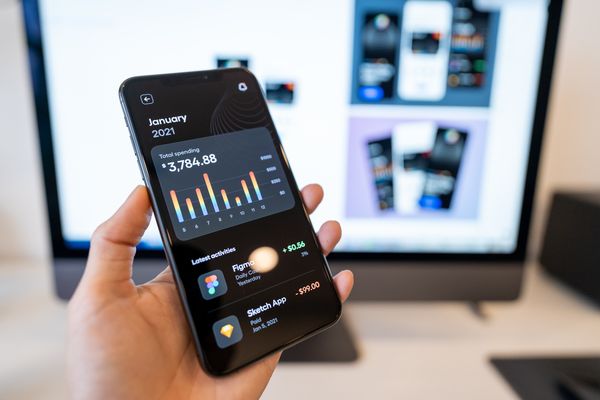The Art of Advanced Prompt Engineering
Imagine sitting across from a genius who can provide answers to almost any question, paint vivid stories, and solve complex problems—all in a matter of seconds. But there's a catch: they'll only give you exactly what you ask for, nothing more, nothing less. Welcome to the world of AI language models like OpenAI's GPT series. The key to tapping into their capabilities lies in how you communicate with them. This is where advanced prompt engineering comes into play.
We'll explore how to craft prompts that transform your interactions with AI from basic exchanges into powerful collaborations. We'll delve into techniques that not only make the AI more useful but also unleash its full creative and analytical potential.
Why Prompt Engineering Matters More Than Ever
As AI technologies become increasingly integrated into our daily lives—from virtual assistants and chatbots to content creation tools—the way we communicate with these systems profoundly impacts their effectiveness. Unlike humans, AI models don't possess consciousness or intuition; they rely entirely on the input they receive to generate responses.
Consider this scenario: You ask the AI, "Tell me about trees." The response you get is likely a general overview of trees. But if you're a botanist looking for specific information, you might ask, "Explain the process of photosynthesis in deciduous trees during autumn." Suddenly, the AI provides a detailed and focused answer tailored to your needs.
The Art of Crafting Powerful Prompts
Let's dive into advanced techniques that will elevate your prompt engineering skills, making your interactions with AI more productive and engaging.
1. Few-Shot Learning: Guiding the AI with Examples
Few-shot learning involves providing the AI with a small number of examples within your prompt to demonstrate the desired format or pattern of the response. This technique leverages the AI's ability to recognize and replicate patterns, ensuring that the output aligns closely with your expectations.
Why It Works:
AI language models are trained on vast datasets containing numerous patterns and sequences. When you include examples, the AI identifies these patterns and continues them, effectively "learning" from the few instances you've provided.
Example:
Translate the following English sentences into French:
- Good morning. -> Bonjour.
- How are you? -> Comment ça va?
- See you later. -> *
With this pattern established, the AI is more likely to correctly translate "See you later." into "À plus tard."
2. Zero-Shot Learning: Trusting the AI's Understanding
Zero-shot learning entails asking the AI to perform a task without providing any examples. Instead, you rely on a clear and detailed instruction, trusting the AI's ability to generalize from its training data.
Why It Works:
AI models like GPT-4 have been trained on a diverse array of internet text, enabling them to understand and execute a wide range of tasks based solely on descriptions.
Example:
"Summarize the following article in one sentence."
This technique is effective for straightforward tasks but may require precise wording for complex requests.
3. Task Chaining: Breaking Down Complex Queries
Task chaining involves decomposing a complex task into a series of smaller, sequential steps within your prompt. This method helps the AI address each component thoroughly, leading to a more comprehensive and organized response.
Why It Works:
By outlining the steps, you guide the AI through the thought process needed to tackle multifaceted questions, reducing the likelihood of missing important details.
Example:
"First, list the main causes of climate change. Then, suggest possible solutions for each cause."
This approach guides the AI through a logical progression, enhancing the depth and organization of the response.
4. Role-Playing: Assigning Contextual Personas
Role-playing prompts assign a specific identity or persona to the AI, influencing the response's perspective, tone, and style. This technique is particularly useful when you want the AI to adopt a certain expertise or viewpoint.
Why It Works:
By specifying a role, you tap into the AI's ability to mimic various writing styles and perspectives learned during training, making the response more tailored and engaging.
Example:
"You are a friendly tour guide. Describe the Eiffel Tower to someone who has never seen it."
The AI will adopt a conversational and descriptive tone, making the information more engaging.
5. Controlling Creativity with Temperature Settings
While you can't always adjust parameters like temperature in every interface, understanding their impact can help you craft prompts that elicit the desired level of creativity or precision.
Why It Works:
The temperature parameter affects the probability distribution of the AI's word choices. Lower temperatures result in more predictable and focused responses, while higher temperatures introduce variability and creativity.
- Low Temperature (e.g., 0.2): The AI's responses become more focused and deterministic.
- High Temperature (e.g., 0.8): The AI produces more varied and creative outputs.

Example:
"Write a short story about a dragon discovering a new land."
At a higher temperature, the story might include unexpected twists and imaginative elements.
6. Instructional Prompts: Directing the AI Explicitly
Instructional prompts give the AI clear, detailed directions on what you expect, including any specific requirements such as length, style, or content elements.
Why It Works:
Explicit instructions reduce ambiguity, helping the AI understand and meet your exact needs, which is particularly useful for complex or specific tasks.
Example:
"In 200 words, explain the importance of cybersecurity in the digital age, using formal language and citing recent statistics."
This specificity ensures the AI's response meets your exact requirements.
7. Prompt Refinement: Iterating for Perfection
Don't be discouraged if the first response isn't perfect. Refining your prompt can lead to significantly better results.
Initial Prompt:
"Explain quantum computing."
Refined Prompt:
"Explain quantum computing in simple terms suitable for a high school student."
This adjustment tailors the complexity of the response to your intended audience.
Practical Tips for Effective Prompt Engineering
To get the most out of your interactions with AI, keep these practical tips in mind:
- Be Specific: Vague prompts yield generic answers. Clearly state what you want.
- Use Constraints: Mention word limits, formats, or styles to guide the AI's response.
- Experiment: Try different phrasings or structures if you're not getting the desired output.
- Provide Context: Include necessary background information within the prompt.
- Set the Tone: Indicate the desired tone—formal, casual, humorous—to match your needs.
Real-World Applications: Making AI Work for You
Advanced prompt engineering isn't just a theoretical exercise; it has tangible benefits across various fields.
Content Creation
Writers and marketers can use AI to generate ideas, draft articles, or create engaging social media posts.
Example:
"As a creative copywriter, write a captivating tagline for a new eco-friendly water bottle."
Education
Educators can develop customized learning materials or explanations for complex topics.
Example:
"Explain the Pythagorean theorem in a simple way that a 12-year-old can understand, including a real-life application."
Business and Data Analysis
Professionals can summarize reports, generate emails, or even analyze data trends.
Example:
"Summarize the key findings of this quarterly sales report, highlighting areas of growth and concern."
Embracing the Future of AI Interaction
As AI continues to evolve, mastering prompt engineering will become increasingly valuable. It's not just about getting answers; it's about engaging in meaningful dialogues with machines that can process and generate information at an unprecedented scale.
Imagine being able to brainstorm ideas, troubleshoot problems, or explore new concepts—all by crafting the right prompts. The potential is vast, and the only limit is your imagination.
Conclusion
Advanced prompt engineering is both an art and a science. It requires curiosity, experimentation, and a willingness to think critically about how you communicate.
By applying the techniques discussed, you'll not only improve the quality of the AI's responses but also enhance your ability to extract valuable insights and creative outputs. Whether you're a writer, educator, business professional, or just someone fascinated by AI, mastering prompt engineering opens up a world of possibilities.
So go ahead—ask better questions, explore new methods, and unlock the true potential of AI. Your next great idea might be just a prompt away.
Ready to take your AI interactions to the next level? Start experimenting with these techniques today and witness the transformative power of advanced prompt engineering.




